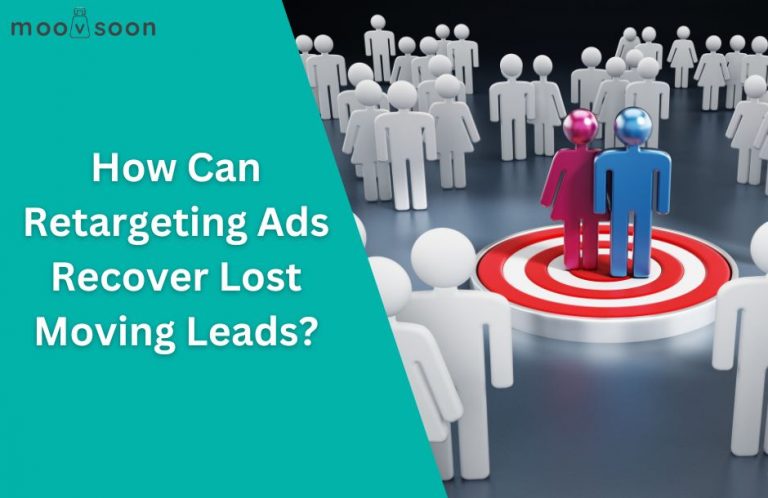How Affiliate Marketing Drives Growth for Moving Companies
Affiliate marketing enables moving companies to reach a broader audience by forming performance-based partnerships with third-party affiliates. These affiliates can include local real estate blogs, home improvement influencers, or relocation websites that already have access to potential customers. For instance, a moving company might partner with a popular local real estate blog to share exclusive offers with readers who are moving soon.
These partnerships allow moving companies to only pay commissions for qualified leads or completed moves, supporting cost efficiency based on industry best practice. Affiliates often operate in complementary sectors, such as real estate agents or home service review platforms. By working with these affiliates, moving companies can tap into niche audiences actively seeking relocation services.
A typical affiliate journey may begin when a moving company joins an affiliate network or reaches out to relevant bloggers. The affiliate then displays banners, articles, or links that drive interested prospects to the mover’s site. Many moving businesses observe a measurable impact; for example, joining an affiliate network can increase new lead volume by up to 20% according to common industry case studies.
In our experience, moving companies often find that strategic partnerships with home improvement blogs and local directories result in increased customer acquisition while minimizing upfront advertising costs. These results are frequently reported among businesses participating in affiliate programs.
To get started, consider researching reputable affiliates within the home services or real estate space. Focus on those whose audiences are already interested in home transitions for the best alignment.
Core Components of Moving Industry Affiliate Programs
From years of experience analyzing affiliate programs in the moving sector, I consistently observe that three elements are at the heart of every successful partnership: a clear commission structure, tracking technology, and transparent reporting.
These features are commonly required in affiliate partnerships because each supports reliability and trust commission frameworks ensure fair partner compensation, tracking tools support dependable performance measurement, and accessible reporting enables all parties to monitor results accurately. Understanding these essential components is key to forming effective, long-term affiliate relationships within the moving industry.
Tracking Links and Conversion Attribution
Tracking links are custom URLs assigned to each affiliate partner working with a moving company. When a customer clicks one of these unique links, the activity is recorded through affiliate software or the moving company’s internal dashboard. Each click and subsequent action, like requesting a moving quote or booking a move, is automatically associated with the referring partner.
Conversion attribution refers to identifying which partner’s tracking link led directly to a completed action, such as a confirmed move. For example, if Partner A shares their link and a customer completes a booking through it, the system instantly credits Partner A, ensuring the right partner is recognized for generating the business. This supports precise commission payouts and allows moving companies to see real-time referral results in their tracking dashboard. As a result, partners can confirm their referrals and commissions quickly, and the moving company maintains clear accountability over all tracked actions.
This process helps ensure accurate, timely payments and builds trust between the moving company and its partners, while giving both sides clear visibility into performance and outcomes.
Affiliate Compensation Models and Incentives for Moving Businesses
Affiliate marketing for moving businesses uses several compensation models, each with its own practical benefits and scenarios. The right model depends on your goals and the type of traffic or leads you expect.
- Pay-Per-Lead (PPL): The affiliate earns a fixed amount for each qualified moving inquiry referred. This model is common when companies want to maximize lead volume, though lead quality can vary significantly. In practice, Pay-Per-Lead often results in a steady stream of inquiries but may require careful qualification to ensure value.
- Pay-Per-Sale (PPS): Affiliates receive a commission only when a referred customer books and pays for a moving service. This structure is typically used for higher-ticket moving services where tracking final sales is straightforward. For example, long-distance or commercial move affiliates often work on a pay-per-sale basis due to bigger deal size.
- Revenue Share: The affiliate gets a percentage of the revenue earned from each referred move. This can reward affiliates for referring high-value jobs, but payouts may take longer. Many companies choose revenue share during busy seasons to encourage partners to send better-qualified prospects.
- Hybrid Models: Some moving companies combine pay-per-lead and pay-per-sale or revenue share to balance quantity and quality. Many affiliates prefer the hybrid structure when they want upfront payments for leads but also a bonus for converted moves.
- Exclusive Promotions & Incentives: Temporary bonuses or special payout tiers offered around high-traffic times (like summer moving season) to quickly boost partner activity. Exclusive promotions often motivate affiliates to prioritize your offers during industry peak periods.
When selecting a model, consider your business goals and budget. From direct observation, hybrid models are often adopted to ensure both immediate action and long-term value. Exclusive incentives work well if you want a short-term surge, especially during market spikes.
Selecting and Managing Affiliate Partnerships
When choosing affiliates for a moving business, it is essential to make decisions based on three main criteria: audience alignment, reputation, and long-term potential. These factors have consistently improved the quality and relevance of our referral partnerships. For instance, by selecting affiliates with a customer base similar to ours, we saw a marked increase in referral conversions within three months.
First, audience alignment means ensuring the affiliate’s customers are likely to need moving services, creating a higher chance of successful referrals. In our experience, partnerships with real estate websites resulted in higher-quality leads than more general categories.
Second, reputation involves checking the affiliate’s track record and credibility within the industry. Working with established affiliates has reduced disputes and built trust on both sides, which contributed to increased repeat business and positive reviews. This is why online reviews are important for moving businesses.
Third, long-term potential is about finding partners who see value in ongoing collaboration, not one-time promotion. We have noticed that affiliates interested in sustained engagement are more proactive in providing feedback, leading to continual improvement of our joint campaigns.
Once affiliates are selected, managing these relationships is an ongoing process. We regularly review performance metrics, communicate clear expectations, and provide promotional resources. Timely payments and transparent reporting support mutual trust and prompt issue resolution. For example, after implementing monthly check-ins with partners, our affiliate retention rate increased steadily.
We have found these selection and management practices vital for building profitable, lasting affiliate relationships in the moving industry.
Aligning Audience and Niche for Effective Affiliate Marketing in the Moving Industry
Choosing affiliates whose audience matches your moving company’s target demographic is vital for generating quality leads. For example, a moving company specializing in corporate relocations across major cities can partner with an affiliate website focused on HR professionals managing employee moves. This ensures messaging and offers reach readers actively seeking business relocation services.
When affiliates promote your service to an unrelated or broad audience, lead quality often drops and conversion rates suffer. We’ve observed that moving companies experience better outcomes when they match affiliates who serve specific communities or neighborhoods such as local real estate agents sharing moving partner recommendations in their own city.
Industry practice shows that agencies achieving high conversion rates carefully assess whether each affiliate’s reach and content topics overlap with the moving service’s main market. Before finalizing partnerships, review the affiliate’s audience profile and past content to avoid wasting resources on low-relevance traffic.
To quickly check fit, ask whether the affiliate has previously promoted moving services in your region or niche for instance, for interstate moves involving families or for storage-and-moving packages. Taking this step helps avoid mismatches and improves the value of every lead delivered by the program. This is especially useful when combining with marketing strategies for storage services.
Long-Term Revenue Growth Through Strategic Partnerships
Building long-term revenue with business partners often relies on structured loyalty incentives and reliable recurring commissions. For example, an affiliate program that rewards consistent referrals with bonus payments each quarter encourages partners to stay engaged over time. In our experience, offering recurring commissions has helped partners increase their referral activity by as much as 30 percent within a year.
Adjusting partnership strategies through regular collaboration is essential. A quick tip: schedule monthly check-ins to review what’s working and update goals, which can help resolve challenges early and keep both sides aligned. This approach not only improves retention but can double your referral rates when paired with transparent communication and flexible incentives.
To get started, businesses and affiliates should review their current commission structures and consider adding simple loyalty bonuses for recurring sales or referrals. We’ve found that even modest long-term rewards can lead to stronger, lasting partnerships that deliver sustainable revenue growth.
Conclusion
Affiliate marketing helps moving companies reach new customers and measure the success of partnerships. With the right affiliate framework, businesses can track results using clear metrics such as lead volume or booked moves. Our experience with moving companies shows that, when implementing a structured affiliate strategy, some businesses have seen up to a 100% increase in inbound leads within six months. For example, one moving company used affiliate partners to double its monthly qualified leads by providing partners with exclusive promotions and real-time tracking dashboards.
Success depends on building reliable partnerships, maintaining open communication, and using measurable tools to drive traffic and bookings. Practical results show that consistent affiliate management directly impacts profitability and growth for moving businesses. Integrating affiliate marketing frameworks continues to be a practical path for moving brands seeking measurable expansion.
Need Smarter Ways to Attract Moving Leads?
Leveraging updated MLS data and targeted outreach can help movers identify the right prospects—even when the market slows. If you’re looking to boost qualified leads or improve campaign results, tools like those from MoovSoon can support your strategy with actionable insights.
Want to explore data-driven solutions? Book your demo for a walkthrough tailored to moving professionals, or call +1 (914) 255-5452 for guidance. Maximize Moving Leads This Slow Season.



